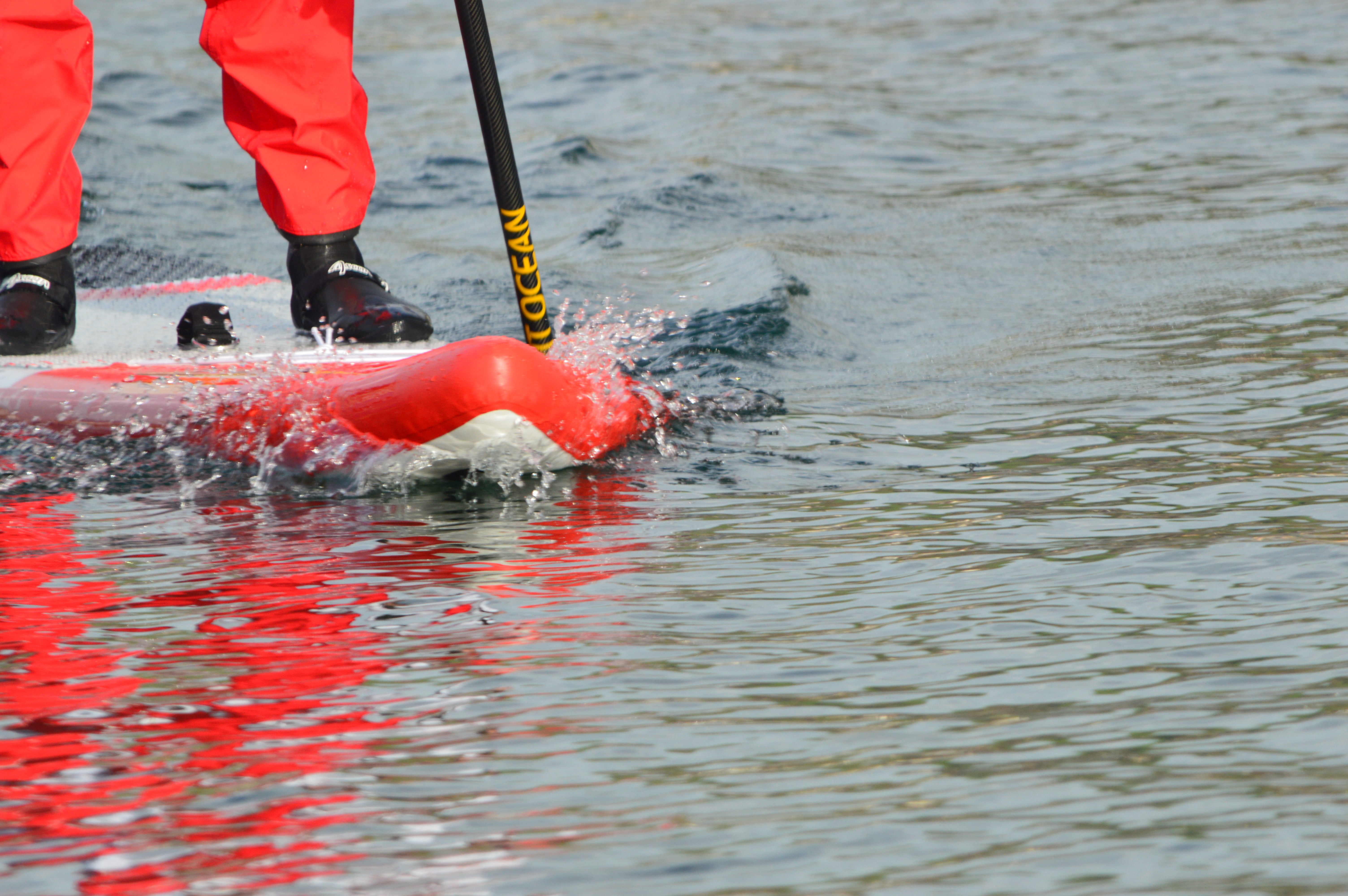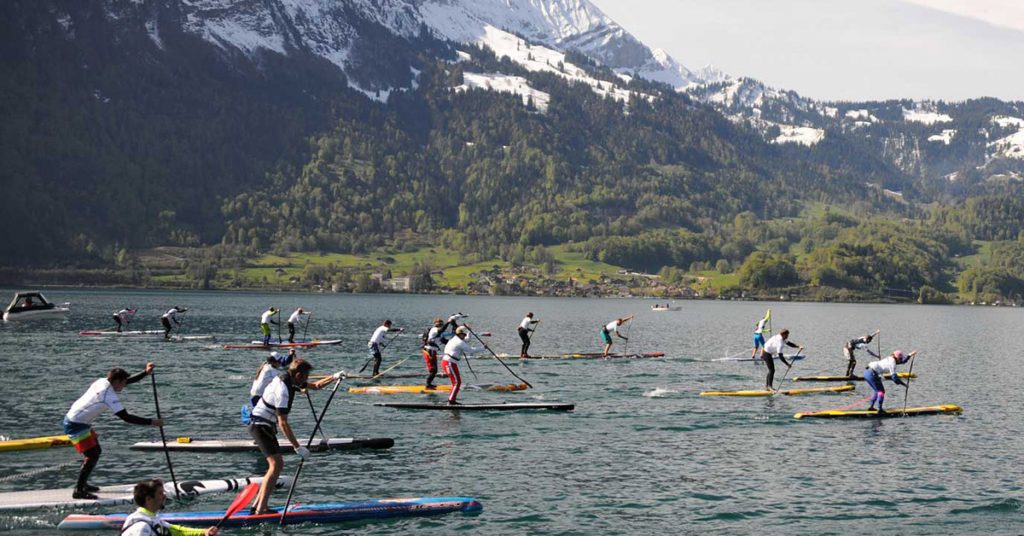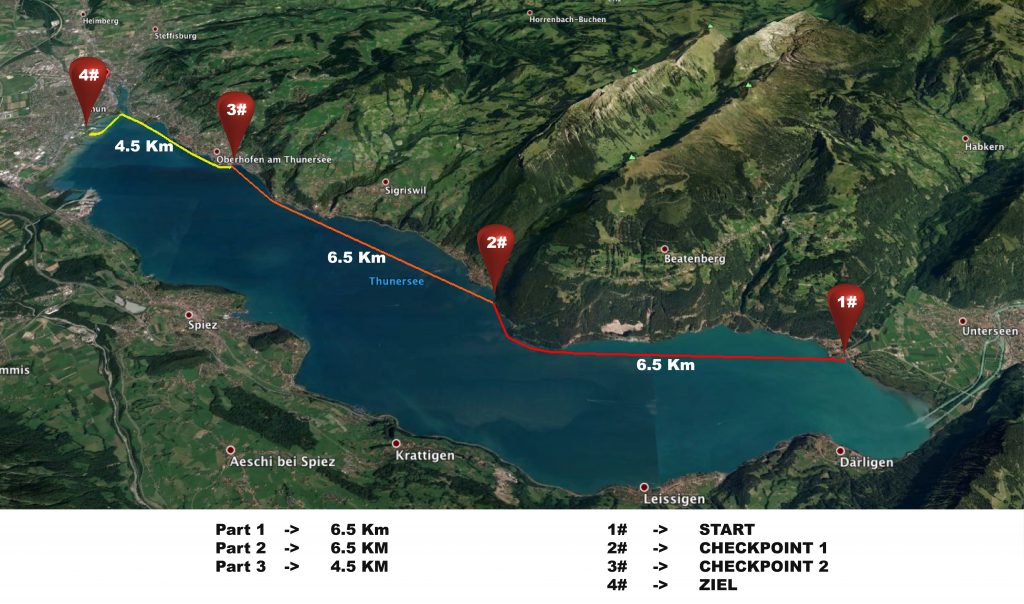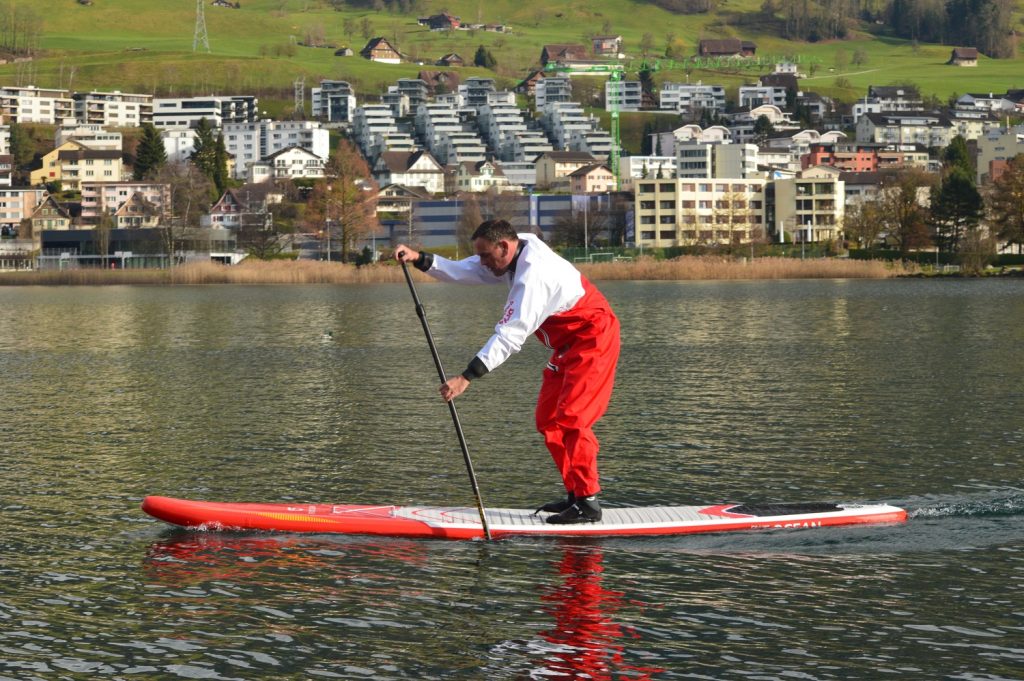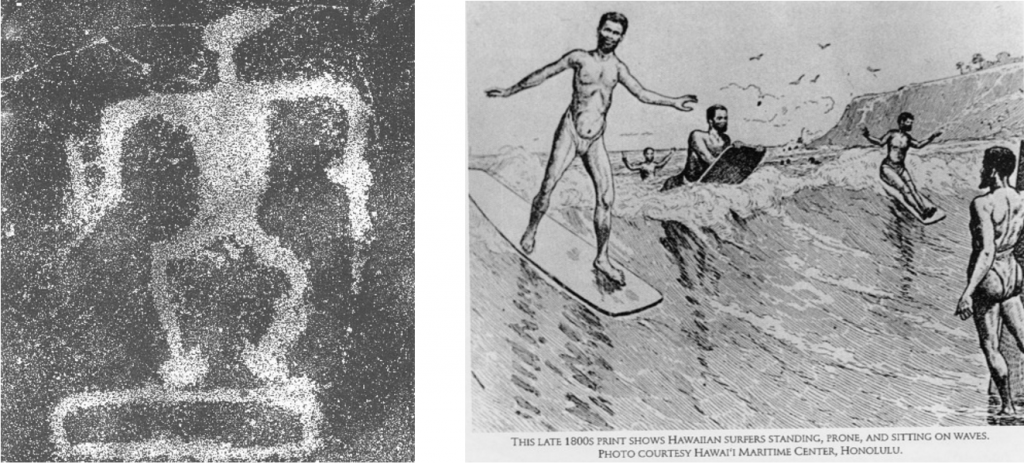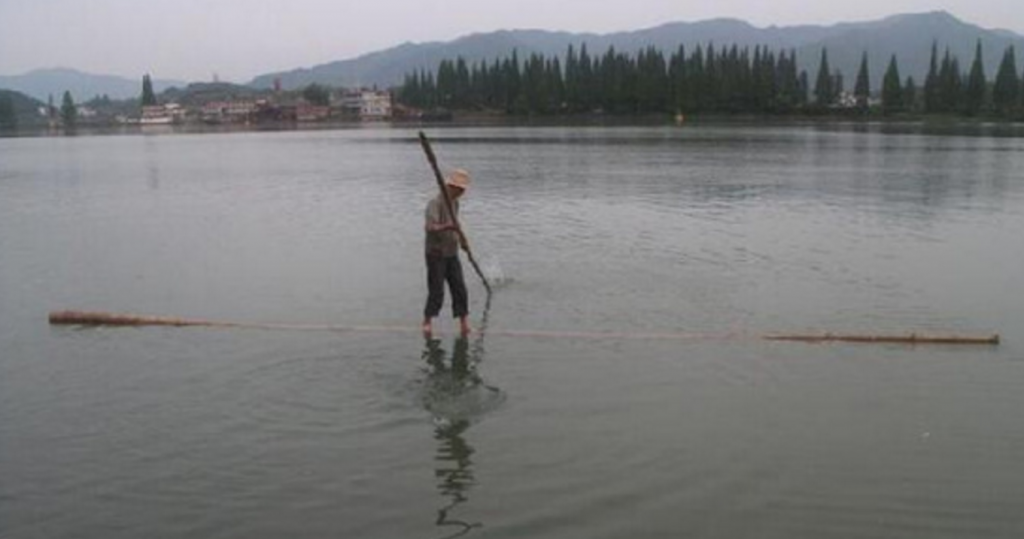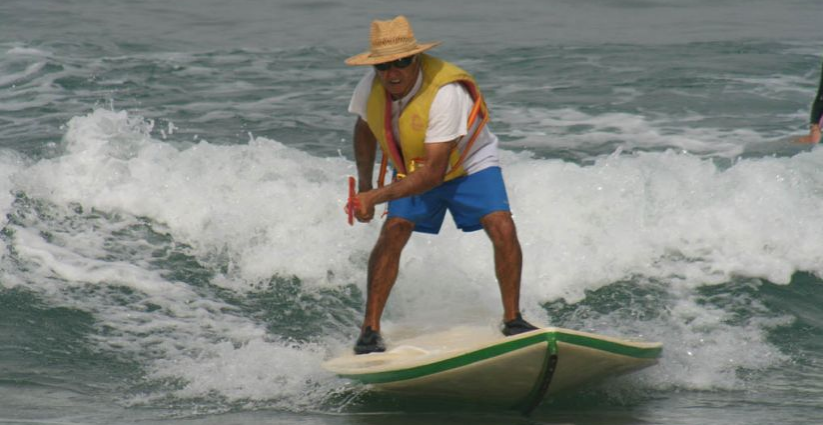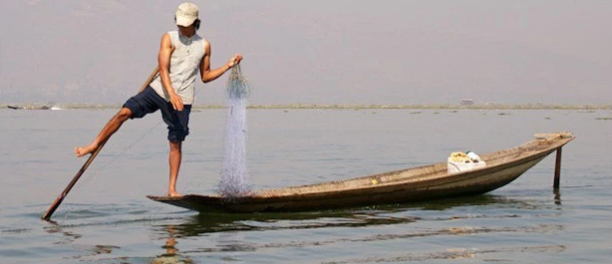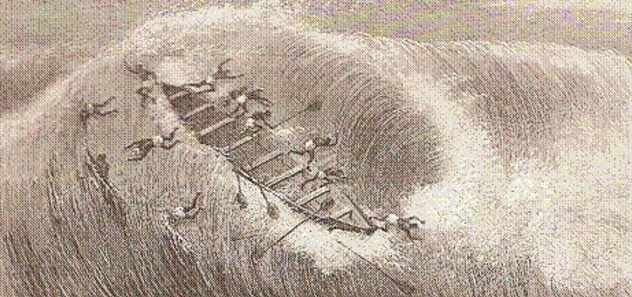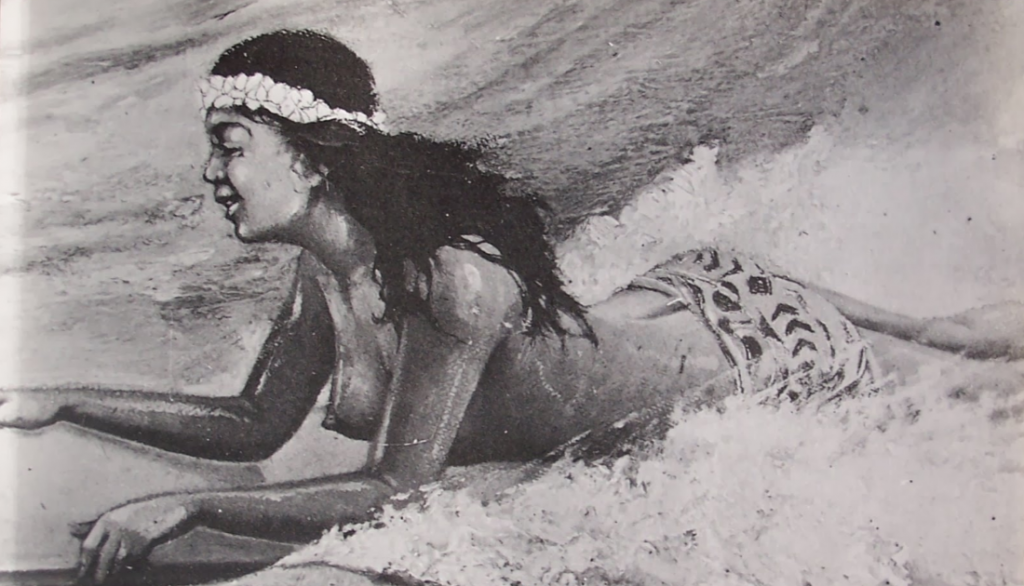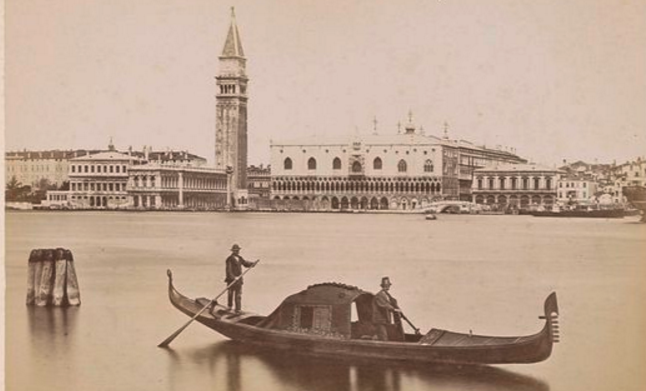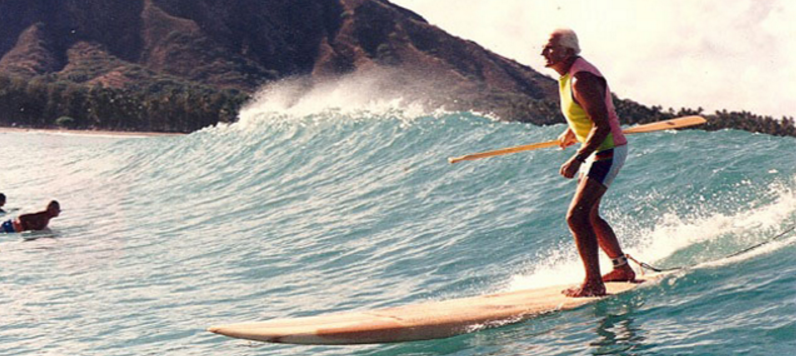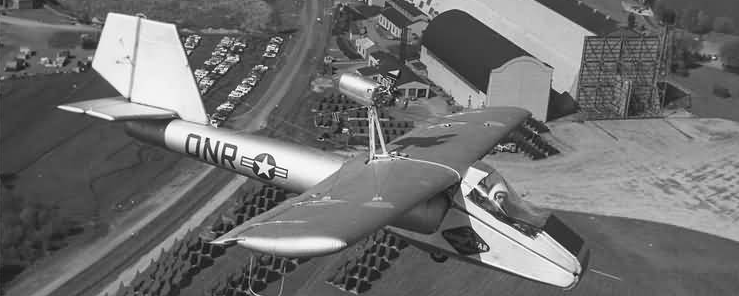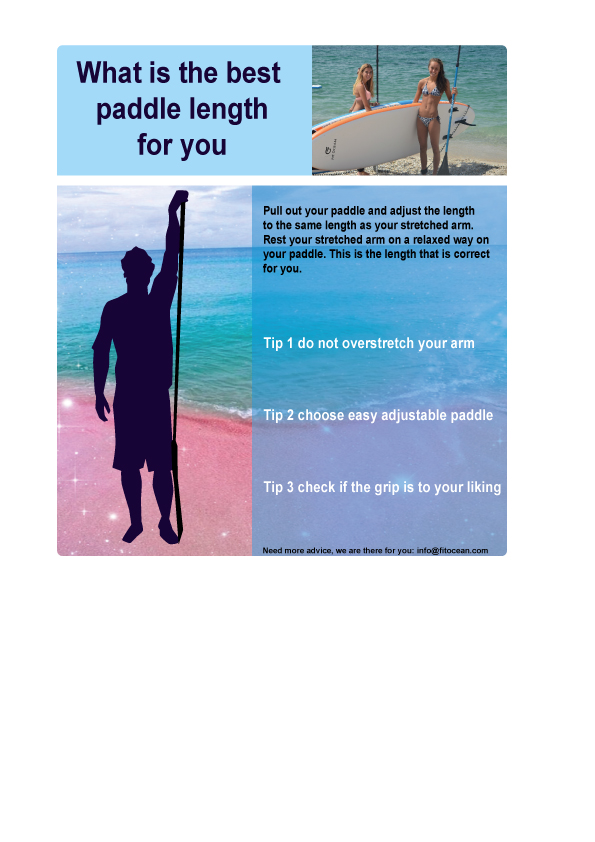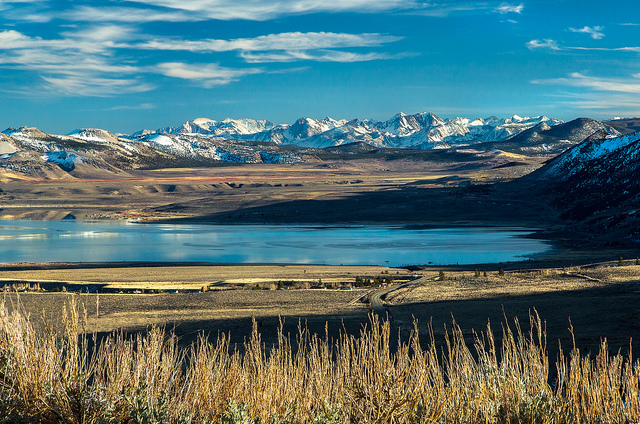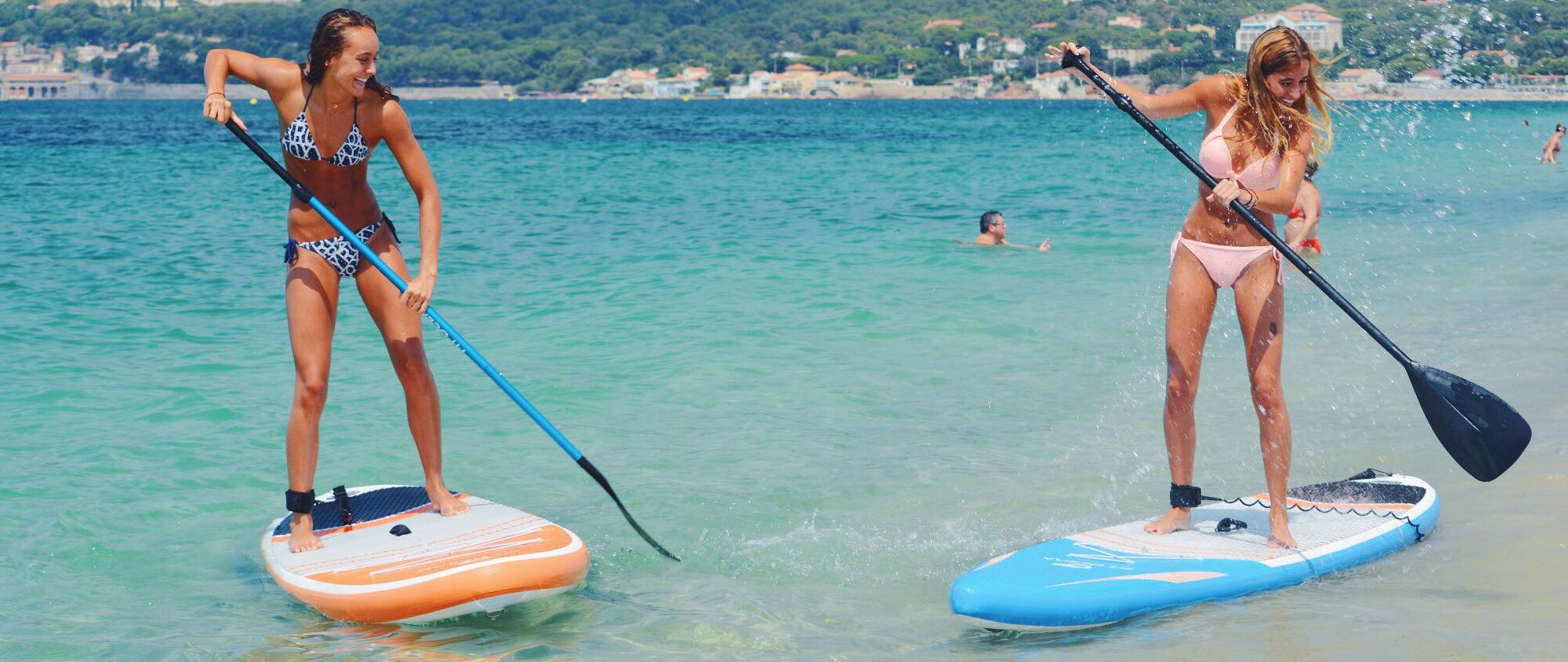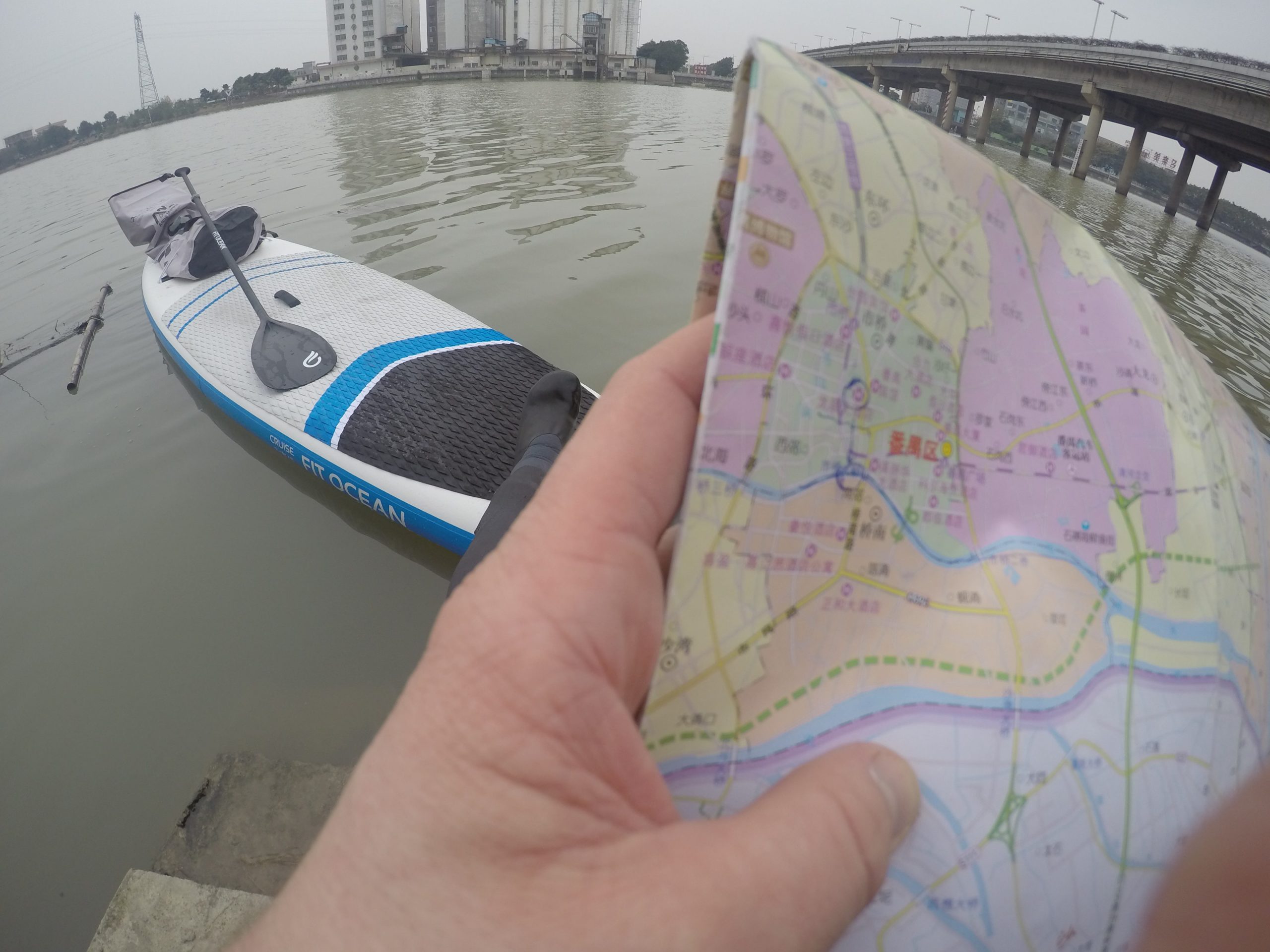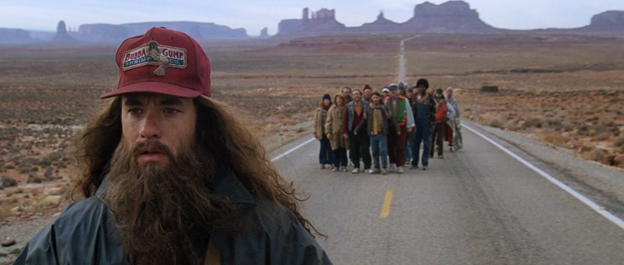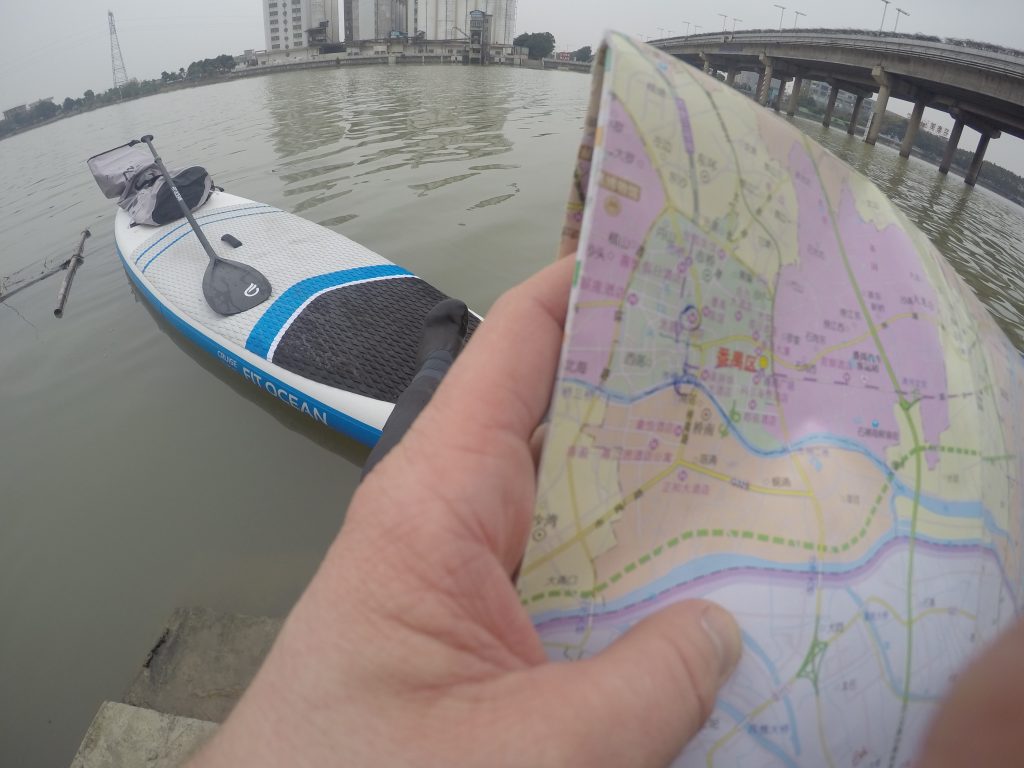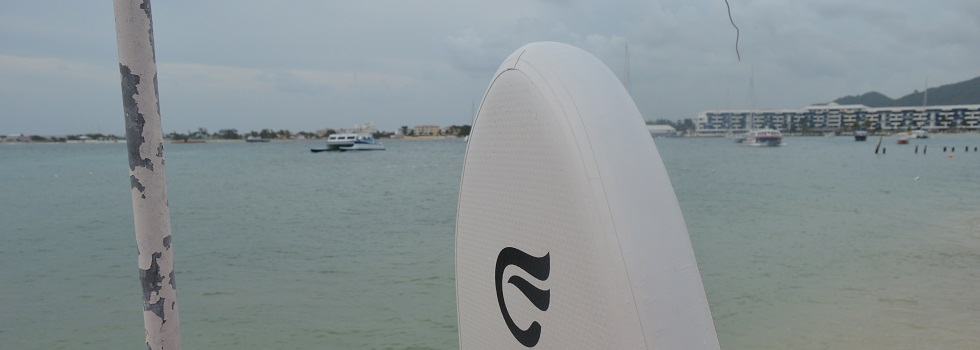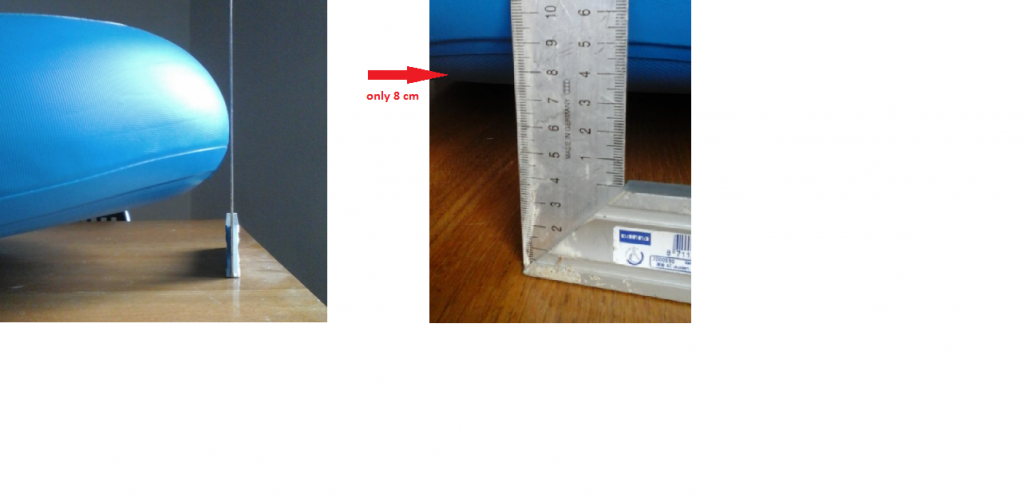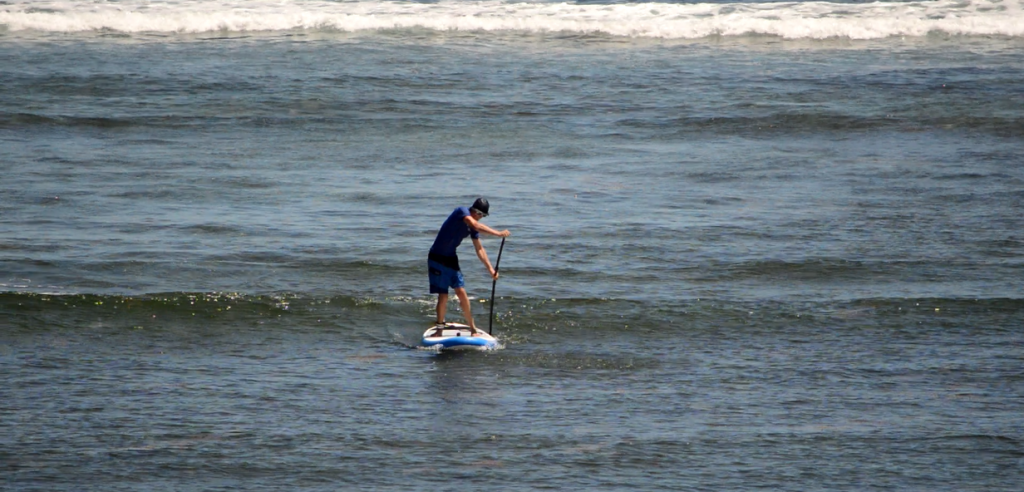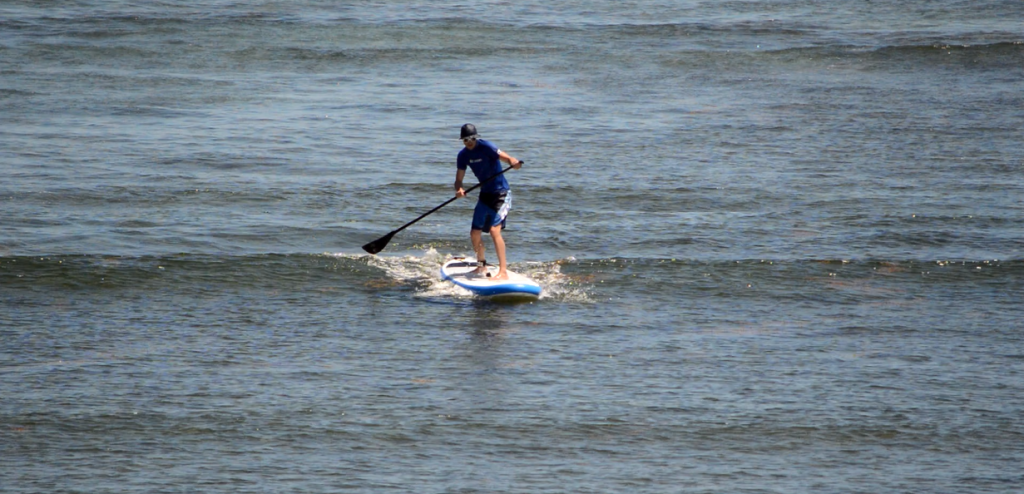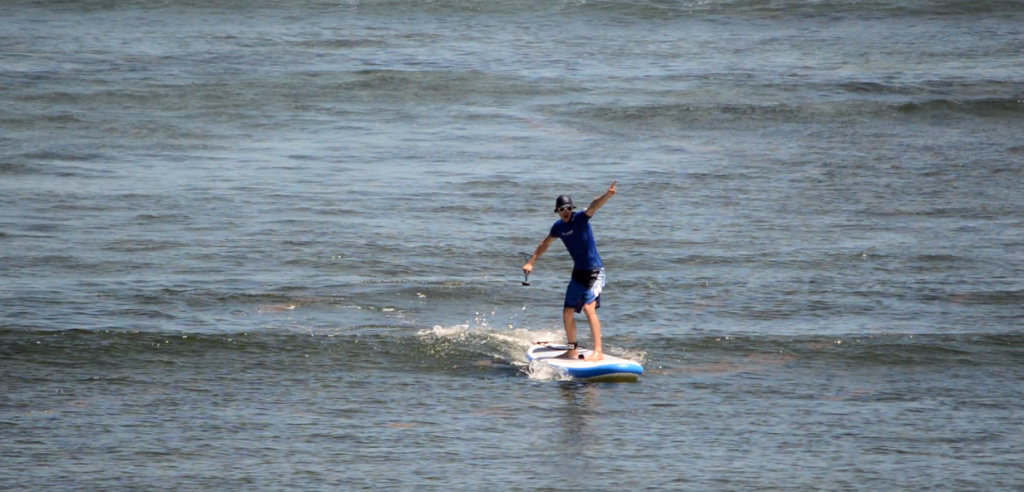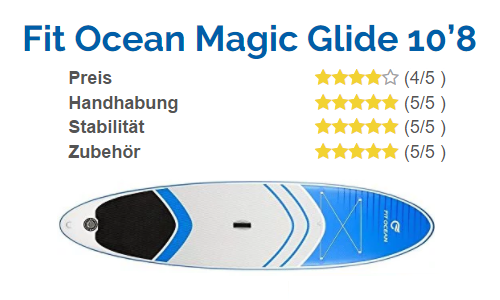
Hey!
We got a nice review on our FIT OCEAN MAGIC GLIDE 10’8. It’s on the leading German advisory SUP Website supboardkaufen.de. Here is the original and the translation in underneath. Enjoy!
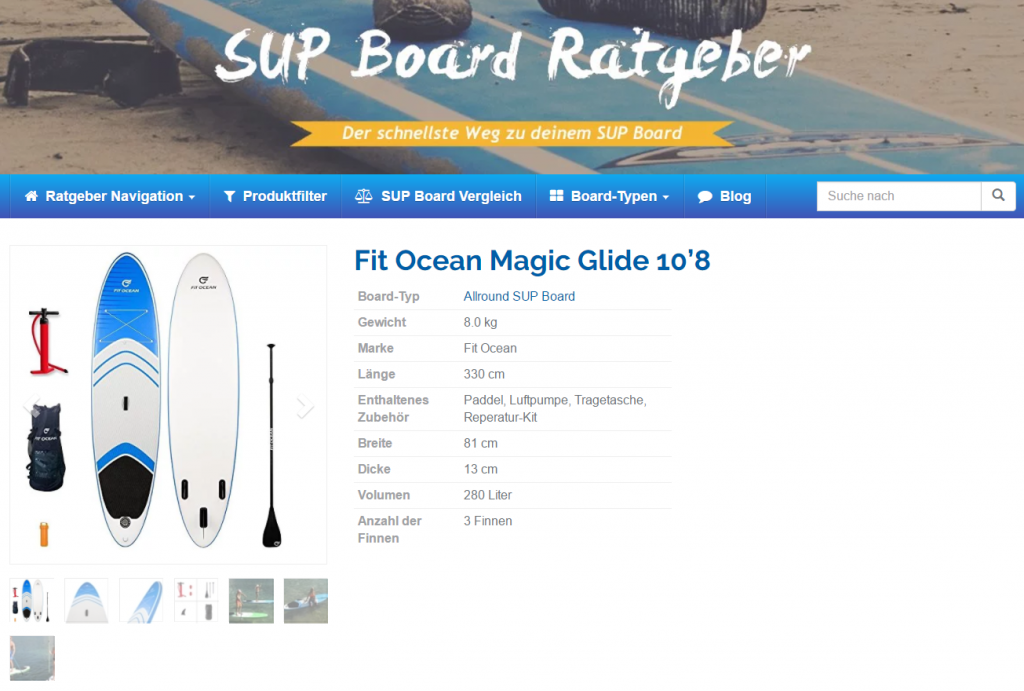
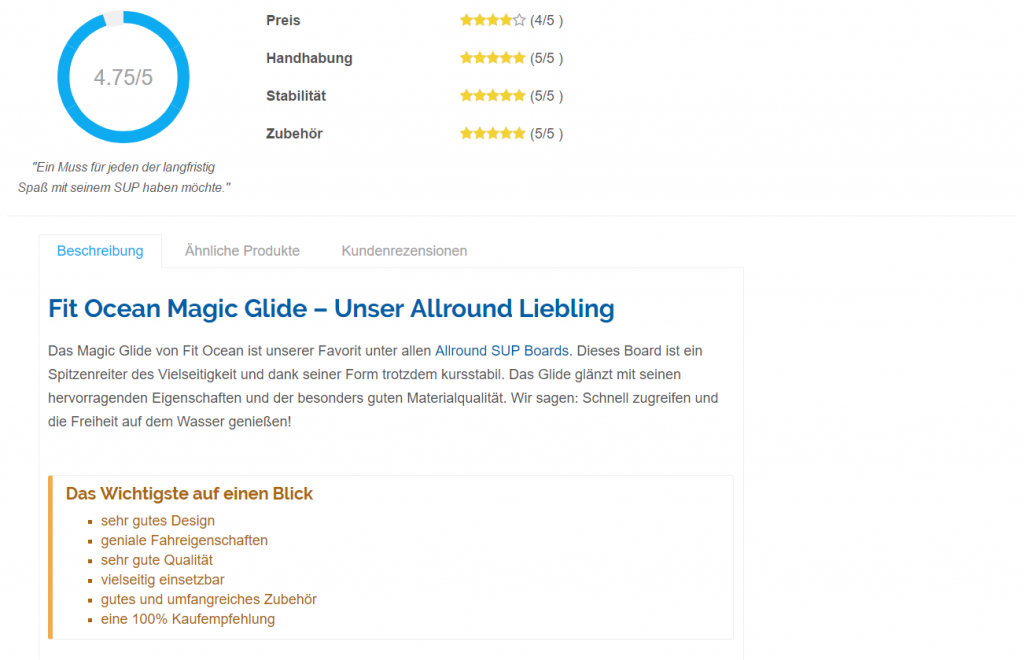
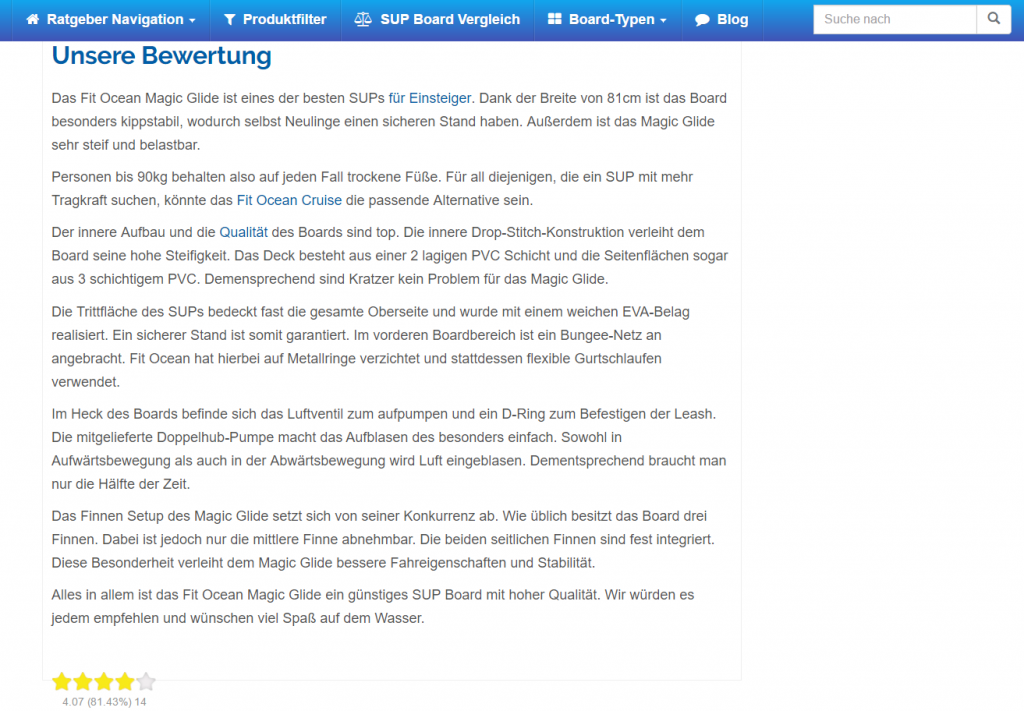
Translation: Review , Test experience FIT OCEAN Magic Glide 10’8
„A must for anyone who wants to have long-term fun with his SUP.“
price (4/5)
handling (5/5)
stability (5/5)
equipment (5/5)
Fit Ocean Magic Glide – Our all-round favorite
The Magic Glide from Fit Ocean is our favorite under all Allround SUP boards. This board is a top performer of versatility and thanks to its shape very stable. The glide excels with its outstanding properties and the particularly good material quality. We say: Quick access to Sthe sport and enjoy the freedom on the water!
Key facts at a glance
- Very good design
- Ingenious handling characteristics
- very good quality
- Versatile application
- Good and comprehensive accessories
- A 100% purchase recommendation
Our rating
The Fit Ocean Magic Glide is one of the best SUPs for beginners. Thanks to the width of 81cm, the board is particularly tipping stable, which means that even newcomers have a safe standing. In addition, the Magic Glide is very stiff and resilient.
People up to 90kg keep dry feet. For those who are looking for a SUP with more power, Fit Ocean Cruise could be the right alternative.
The interior design and the quality of the board are top. The internal drop-stitch construction gives the board its high stiffness. The deck consists of a 2 ply PVC layer and the sides even of 3 ply PVC. Accordingly, scratches are not a problem for the Magic Glide.
The tread of the SUP covers almost the entire upper side and has been realized with a soft EVA coating. A safe stand is thus guaranteed. A bungee net is attached to the front board area. Fit Ocean has dispensed with metal rings and instead used flexible belt loops.
In the rear of the board, the air valve is inflated and a D-ring for fixing the leash. The supplied double-stroke pump makes the inflation of the particularly easy. Air is blown in both upward and downward movements. Accordingly, you only need half the time.
The Magic Glide’s fins set off from its competition. As usual the board has three Finns. However, only the middle fin is removable. The two side fins are firmly integrated. This special feature gives Magic Glide better handling and stability.
All in all, the Fit Ocean Magic Glide is a cheap SUP board with high quality. We would recommend it to anyone and wish lots of fun on the water.



